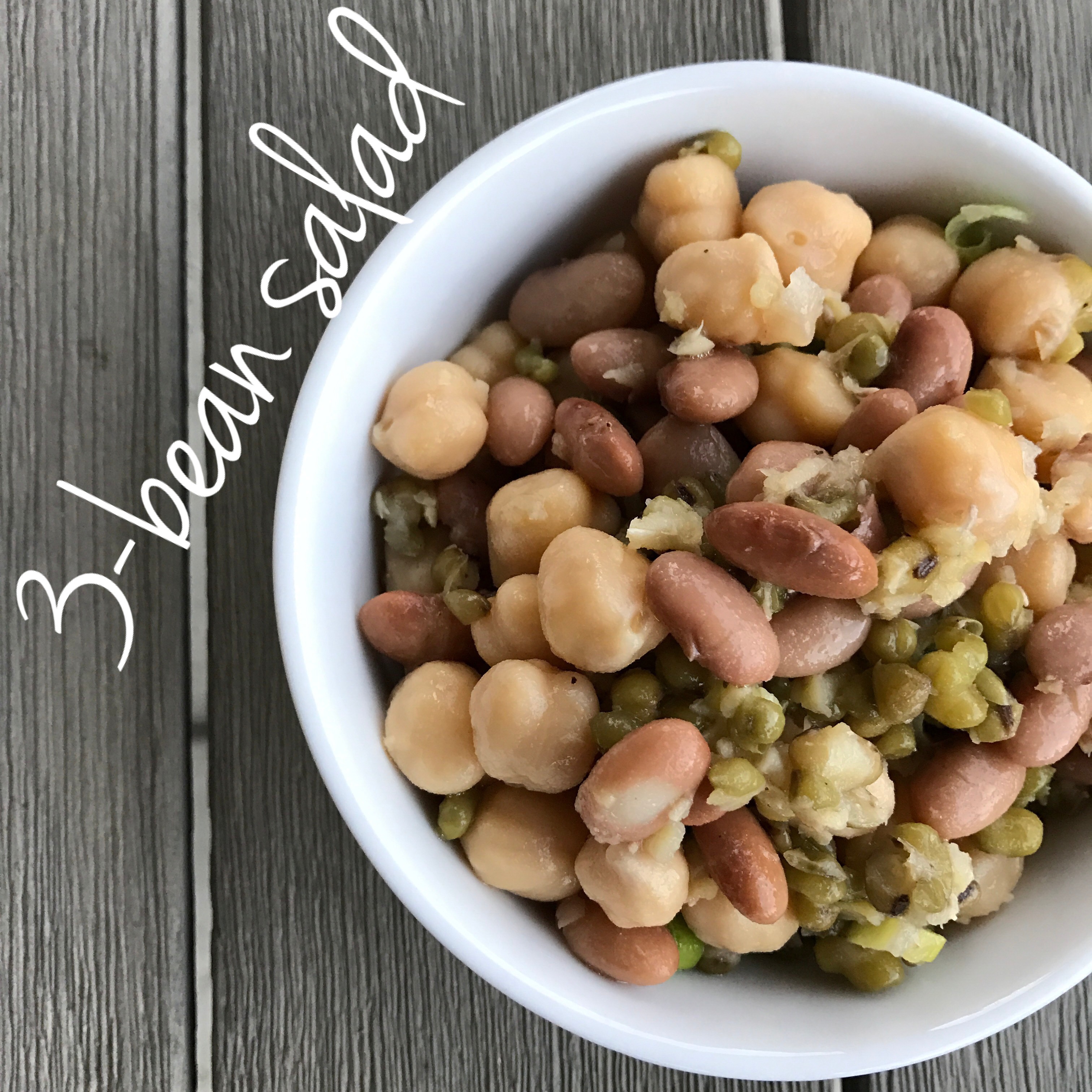
Serves: 8
Prep time: 5 minutes
Ingredients:
1 ½ cups boiled, no salt added, drained, chickpeas
1 ½ cups boiled, no salt added, drained, pinto beans
1 ½ cups boiled, no salt added, drained, sprouted mung beans
¼ chopped scallions or green onions
Juice of 2 limes
1 Tbsp olive oil
sal and paprika to taste
Instructions:
- Mix all ingredients together and enjoy!
Nutrition Facts per serving (5 oz)
Calories: 120
Fat Calories:24
Total Fat 2.7g
Saturated Fat 0.4g
Cholesterol 0mg
Sodium 5.6mg
Total Carb 19g
Dietary Fiber 5.5g
Sugars 2.5g
Protein 6.2g
- Great alternative for meatless meal, it provides almost same amount of protein as 1 oz of chicken breast but without any animal fat.
- Ideal for those following a gluten-free diet.
- High in fiber, rich in complex carbs à lower glycemic index.
- Rich in antioxidants, good source of zinc, calcium, selenium and folate.
- Good source of iron, talking about iron…
- Iron is available in two different forms: heme and nonheme. Heme iron comes from animal-based foods such as meat, poultry and fish. Nonheme is the only type of iron you’ll get from plant-based foods such as legumes, dark leafy vegetables and fortified cereals.
- However not all iron is equal. About 15-35%of heme iron is absorbed into your system, compared to only 2-20% of nonheme iron which is also strongly influenced by foods that may enhance or inhibit its absorption.
- The solution: when consuming foods with non-heme iron, combine them with foods rich in vitamin C. It strongly enhances the absorption of nonheme iron, but they must be consumed simultaneously.
Prefer to go “all natural” for your beans? Great idea! The benefit of choosing canned beans besides convenience is that people usually tolerate them (AKA flatulence) better than home-cooked.
The cause: indigestible carbs. Many legumes cause sudden increase in bacterial activity and gas production a few hours after they are consumed. This is because they contain large amounts of carbohydrates (oligosaccharides) that human digestive enzymes cannot convert into absorbable sugars. Therefore, these carbohydrates leave the upper intestine unchanged when they enter the lower intestine, causing gas and bloating.
The solution: soaking. Oligosaccharides are soluble in water, so soaking them in water it will help leach out most of these carbohydrates. There have been some theories that this process may leach out other significant number of water-soluble vitamins and minerals. However, research states the opposite as shown in this study: Soaking the common bean in a domestic preparation reduced the contents of raffinose-type oligosaccharides but did not interfere with nutritive value. Hence, people tolerate canned beans better since they have been soaking in liquid for a very long time. Of course, considering you rinse them and do not consume the liquid.
Here is how to cook them:
- Soak the beans overnight or 8+ hours
- Pour off soaking water, add fresh water
- Do not salt.
- Cook for an hour or more until tender.
- If desired, salt to taste after they can be easily smashed between two fingers.
- Consume or cool and store in fresh water.

